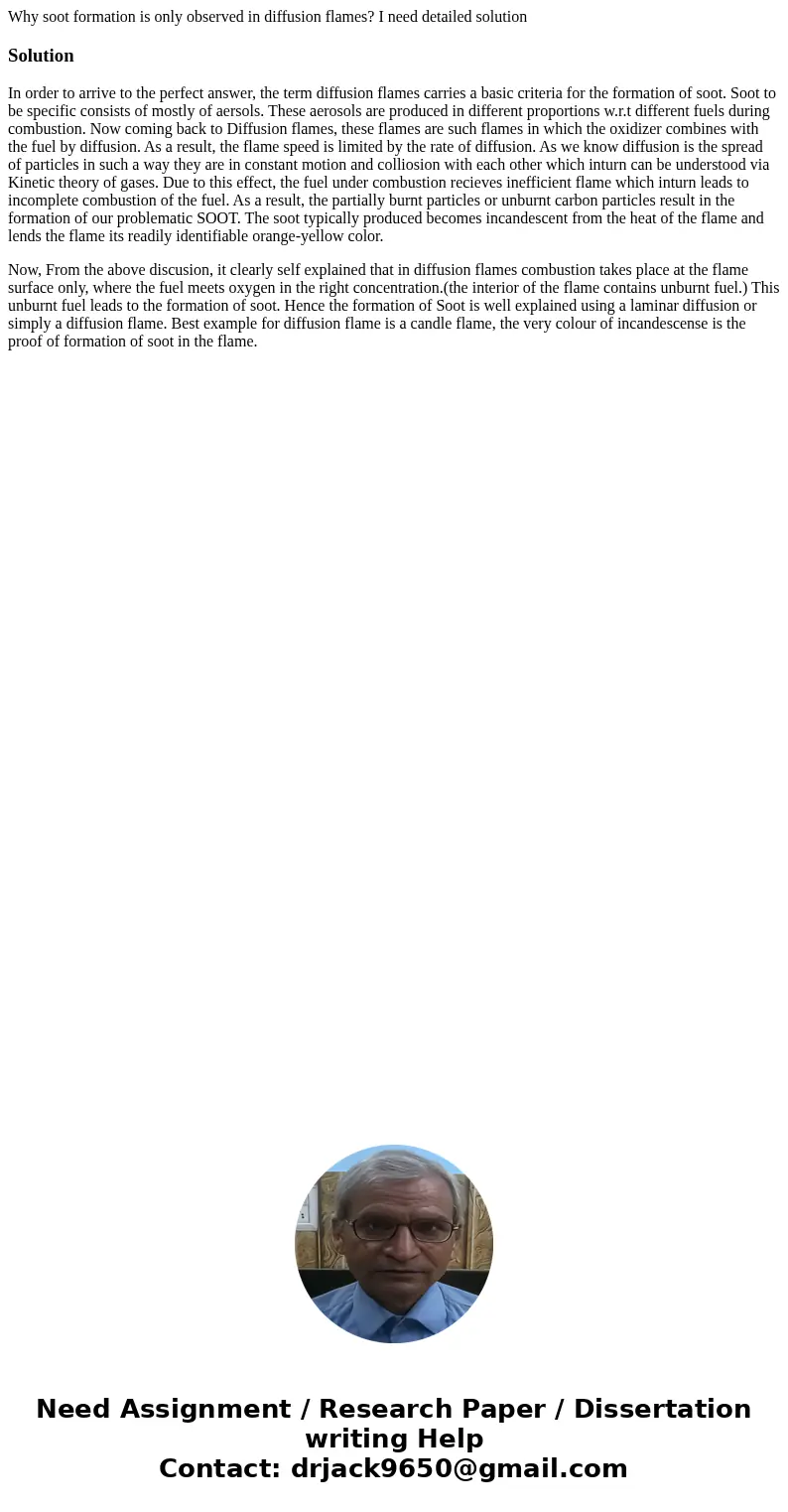Why soot formation is only observed in diffusion flames I ne
Why soot formation is only observed in diffusion flames? I need detailed solution
Solution
In order to arrive to the perfect answer, the term diffusion flames carries a basic criteria for the formation of soot. Soot to be specific consists of mostly of aersols. These aerosols are produced in different proportions w.r.t different fuels during combustion. Now coming back to Diffusion flames, these flames are such flames in which the oxidizer combines with the fuel by diffusion. As a result, the flame speed is limited by the rate of diffusion. As we know diffusion is the spread of particles in such a way they are in constant motion and colliosion with each other which inturn can be understood via Kinetic theory of gases. Due to this effect, the fuel under combustion recieves inefficient flame which inturn leads to incomplete combustion of the fuel. As a result, the partially burnt particles or unburnt carbon particles result in the formation of our problematic SOOT. The soot typically produced becomes incandescent from the heat of the flame and lends the flame its readily identifiable orange-yellow color.
Now, From the above discusion, it clearly self explained that in diffusion flames combustion takes place at the flame surface only, where the fuel meets oxygen in the right concentration.(the interior of the flame contains unburnt fuel.) This unburnt fuel leads to the formation of soot. Hence the formation of Soot is well explained using a laminar diffusion or simply a diffusion flame. Best example for diffusion flame is a candle flame, the very colour of incandescense is the proof of formation of soot in the flame.

 Homework Sourse
Homework Sourse